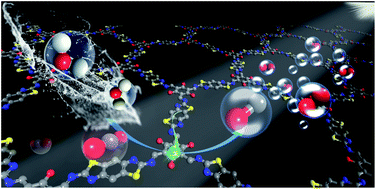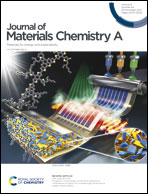A metal-free covalent organic framework as a photocatalyst for CO2 reduction at low CO2 concentration in a gas–solid system†
Abstract
A β-ketoenamine-based COF is used as a photocatalyst to convert CO2 and H2O into CO and O2 under visible-light irradiation without using additional photosensitizers and sacrificial agents in a gas–solid system. When CO2 concentration was controlled at 30.0% at 80 °C, TpBb-COF exhibited a CO production rate of 89.9 μmol g−1 h−1, which was higher than that (52.8 μmol g−1 h−1) in pure CO2, indicating that low concentrations of CO2 are conducive to the photocatalytic reduction of CO2. DFT calculations indicate that the adsorption of H2O on TpBb-COF was more preferential, which promoted the adsorption and reduction of CO2. In light of this finding, the mechanism or reaction pathway was explored. The rate equation of CO2 photocatalytic reduction was derived to correlate the association of the CO2 concentration and CO production rate, which is consistent with the experimental results and theoretical calculations.



 Please wait while we load your content...
Please wait while we load your content...